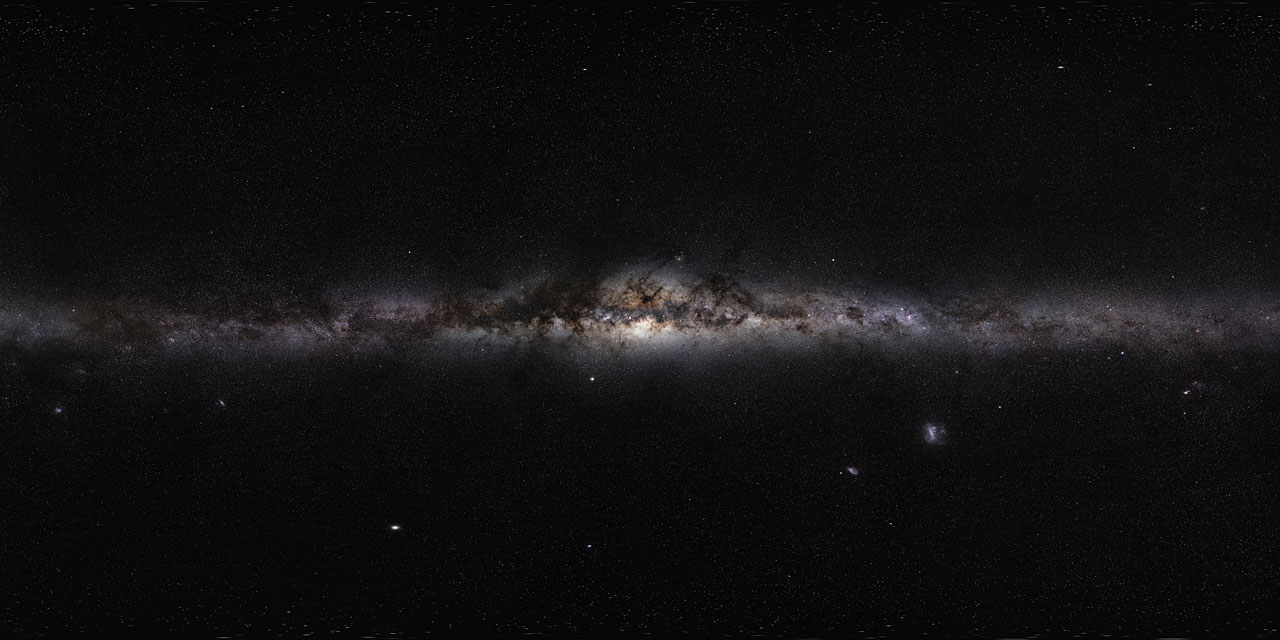Our view of the cosmos is always limited by the fact we are located within a galaxy filled with interstellar gas and dust. This is most dramatically seen in the central region of the Milky Way, which is filled with so much dust that it is sometimes referred to as the Zone of Avoidance. Within this zone, our observations of extragalactic objects are limited, but that is starting to change.
Although the dust of the Zone of Avoidance blocks visible light from coming through it, infrared and radio light can penetrate the region. We have long used radio and infrared observations to study the center of our galaxy, such as observing the stars that orbit our supermassive black hole. Now a new study has used public sky surveys to look for galaxies within the Zone.
The work focuses on data from the near-infrared public survey VISTA Variables in Vía Láctea (VVV), gathered by the VISTA telescope in Paranal, Chile. Although the survey focused on studying globular clusters and open clusters, it also captured data on galaxies in the region. To distinguish galaxies from other objects, the team began by selecting extended objects within the data. They then filtered their objects looking for the ones that had a typical galactic spectrum. This meant they would miss many galaxies, but their goal was to find some galaxies, not all of them.

They then compared their candidates with data from the 2MASS Extended Source Catalogue. Although 2MASS contains 1.5 million objects, only 271 of them are in the VVV survey region, and the team found that only 182 are galaxies. That’s a small number, but the results are impressive. Galaxy images captured by the VVV survey show significantly greater detail than the 2MASS survey, and this work was able to confirm 75% of the 2MASS galaxies in the region.
This is just a first step in the study of galaxies hidden by the Zone of Avoidance. The team plans to continue this work and bring in data from the VVV eXtended Survey, which should allow them to study thousands of galaxies. As this study shows, the center of our galaxy is no longer a region to avoid. It poses significant challenges, but the reward will be an understanding of a part of the universe long hidden from view.
Reference: Duplancic, Fernanda, et al. “Enlightening the Universe behind the Milky Way Bulge.” arXiv preprint arXiv:2310.13156 (2023).

